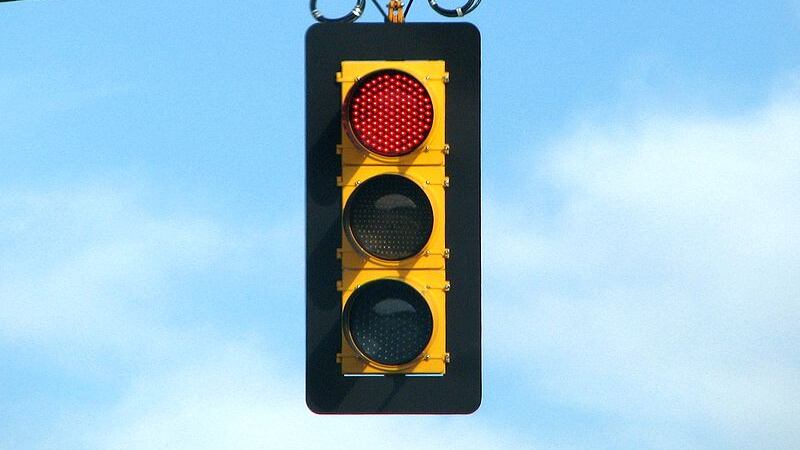The Portland Bureau of Transportation will lower the speed limit on Northeast Halsey Street on Sept. 13, a move PBOT called “a rare, dramatic step in the city’s effort to achieve Vision Zero, the goal of eliminating all traffic deaths.”
The reduction will lower the speed limit on more than 2 miles of Northeast Halsey, which has seen a high number of crashes.
PBOT will lower the speed limit to 30 miles per hour from Northeast 114th Avenue to the city limits, just west of 162nd. That’s a reduction of 5 mph from 114th to 137th and 10 mph east of 137th.
Oregon Walks, an advocacy group that closely monitors traffic crashes, injuries and deaths, applauded the move. But the group’s executive director, Ashton Simpson, says PBOT must do much more to increase safety on city streets.
“Northeast Halsey is designed like a drag strip, and this doesn’t change that,” Simpson says.
As a person who lives just off Northeast Halsey at 138th, Simpson says he regularly sees drivers vastly exceeding the current speed limit and driving erratically without fear of penalty.
Records show a city speed study found that 76% of drivers regularly exceed the speed limit between Northeast 114th and 137th.
That speed plays a part in the extraordinary toll drivers have taken along Northeast Halsey. PBOT says there were no pedestrian deaths in the corridor in question from 2015 to 2018—but there have been four there since 2019.
Although PBOT is adding two marked crosswalks as well as dropping the speed limit, Oregon Walks would like to see many more crosswalks, which have the effect of slowing traffic as well as making it safer for pedestrians to cross, and want to give the five-lane thoroughfare a “road diet” by adding protected bike lanes, traffic-calming devices and other features that would slow traffic. Simpson says he’d also like to see greater enforcement with fixed speed cameras, which have proven effective at slowing drivers but which the city has deployed at a glacial pace.
Earlier this year, WW drew on an exhaustive study of Portland traffic deaths compiled by Oregon Walks to show that such deaths occur disproportionately east of 82nd Avenue and disproportionately affect low-income people of color.
Related: You’re Driving Too Damn Fast.
Research shows that speed is a leading cause of death, but wide and difficult-to-cross streets such as Northeast Halsey are also a factor. Simpson says Halsey suffers from three other dangerous conditions: insufficient lighting, inadequate sidewalks, and poor access to transit.
“People fly through this neighborhood as if we, the people who live here, don’t exist,” Simpson says.
With the new crosswalks, Oregon Walks says the distance between marked crosswalks on the 2.5-mile stretch of Northeast Halsey will shrink from 3,366 feet to 2,200 feet—still far too great for safety. Most downtown blocks, by comparison, are 200 feet long, which means marked crosswalks are 11 times as frequent. As neighborhoods on the outer eastside have grown increasingly dense, infrastructure has failed to keep pace.
PBOT continues to invest heavily in its Vision Zero strategy, designed to eliminate deaths and serious injuries on city streets by 2025. The bureau has poured more than $120 million into safety improvements since the Portland City Council adopted the policy in 2016, but the trend is heading in the wrong direction. PBOT says traffic deaths are running nearly 30% ahead of last year’s total of 54.
Records show that making even incremental changes like the Halsey speed limit reduction take a long time. PBOT submitted the required speed zone investigation to the Oregon Department of Transportation, which must approve many such changes, in May 2019, more than two years ago.
Simpson says when more than one Portlander dies every week from a traffic crash, city and state agencies must act with more urgency.
“We’re not doing enough,” he says. “We could do a whole lot more.”
